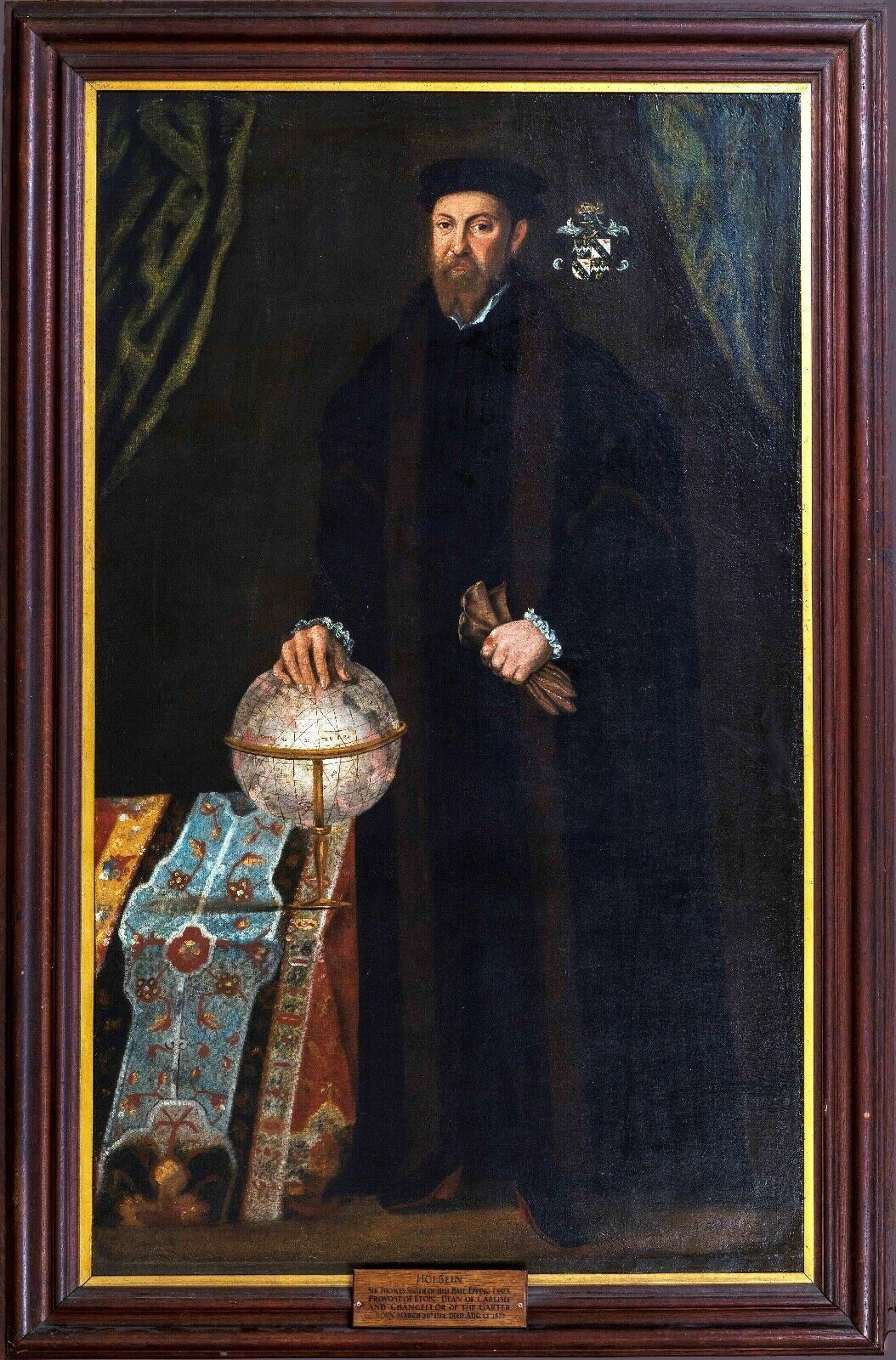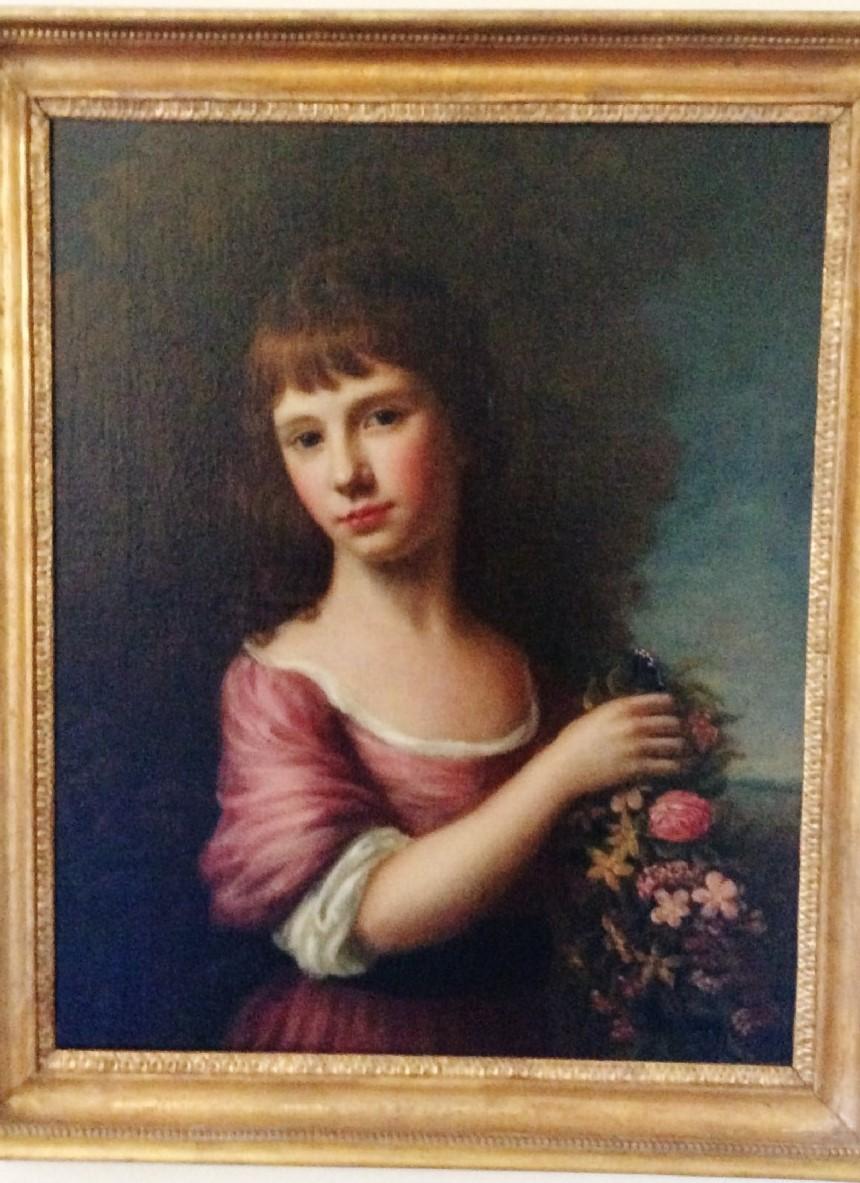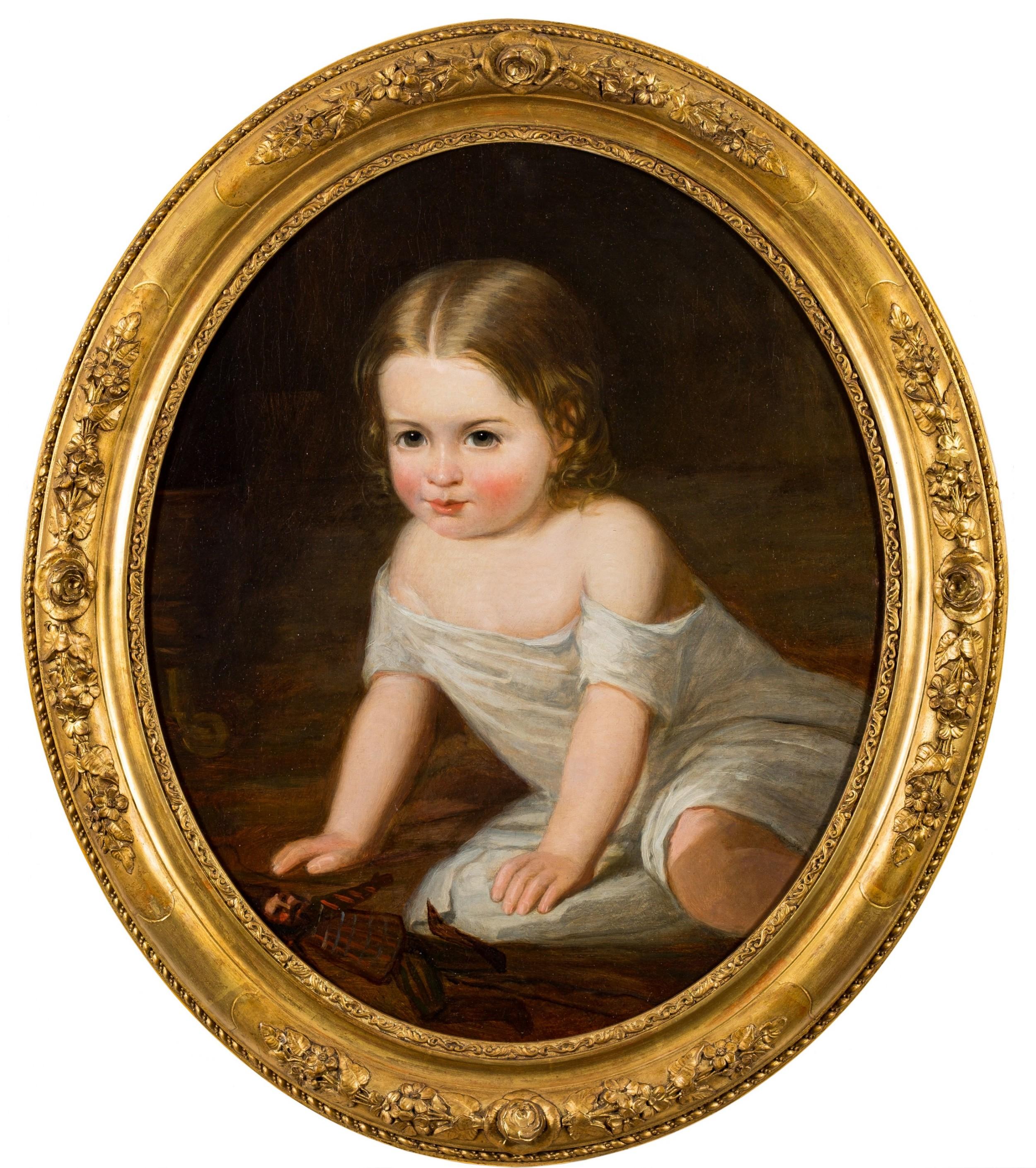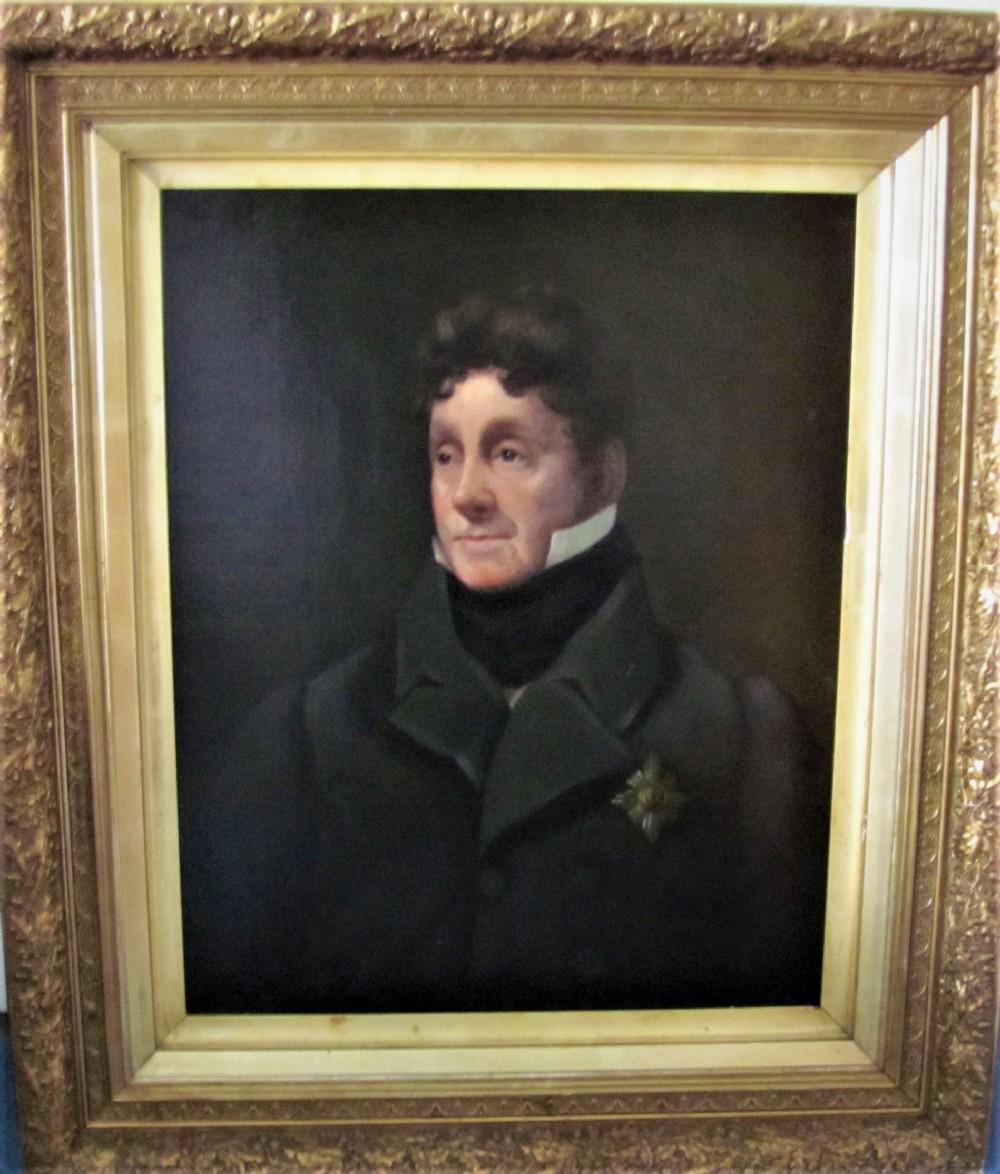Items Similar to Portrait of Lady in Mob Cap - British Old Master 18th century art oil painting
Want more images or videos?
Request additional images or videos from the seller
1 of 14
John Russell (att)Portrait of Lady in Mob Cap - British Old Master 18th century art oil paintingCirca 1790
Circa 1790
About the Item
This charming British Old Master Regency pastel portrait is attributed to John Russell RA. Painted circa 1790 the composition is a blonde woman in pretty mob cap with a blue ribbon. A really lovely image.
Provenance. Oxford estate.
Condition. Oil pastel on paper, 23 inches by 19 inches unframed and in good condition but has line in paper in middle.
Frame. Housed in a fine frame, 30 inches by 26 inches framed and in good condition.
John Russell RA (1745-1806) was an English painter renowned for his portrait work in oils and pastels, and as a writer and teacher of painting techniques. Russell was born in Guildford, Surrey, the son of John Russell Snr., book and print seller and five times mayor of the town; his father was something of an artist, and drew and published two views of Guildford. Russell was educated at the Royal Grammar School, Guildford, and soon showed a strong inclination for art. He trained under Francis Cotes RA (of Cavendish Square, London), one of the pioneers of English pastel painting, and, like Cotes, was an admirer of the pastel drawings of Rosalba Carriera whose methods influenced his technique of "sweetening". At the age of 19 he converted to Methodism, which was the cause of tension with his family and with his teacher; he made no secret of his strong evangelical leanings and would attempt to preach and convert at every opportunity. Russell set up his own studio, in London, in 1767. He made the acquaintance of the notorious Dr. William Dodd, whose portrait he painted in 1768. He was introduced to Selina, Countess of Huntingdon, who unsuccessfully attempted to persuade him to give up painting and attend her Methodist ministers' training college at Trevecca in Wales. On 5 February 1770, he married Hannah Faden, daughter of a Charing Cross print and map seller, whom he had converted. They lived at No. 7 Mortimer Street, Cavendish Square, where he had moved in 1770. Russell's work caused him to travel extensively around Britain. In 1772, he wrote Elements of Painting with Crayons, by which time he had won premiums for his drawings from the Society of Arts in 1759 and 1760, and entered the Royal Academy school of art in 1770, winning its gold medal for figure drawing the same year. He exhibited at the Society of Artists of Great Britain in 1768 and showed 330 works at the Academy between 1769 until and his death. In 1770, Russell painted Methodist minister, George Whitefield (engraved by James Watson) and the future philanthropist, William Wilberforce, then only eleven years old. In 1771, he exhibited a portrait in oils of Charles Wesley at the Royal Academy and, in 1772, painted Selina, Countess of Huntingdon in pastel. This was a symbolic picture, and was lost on its voyage out; but it was engraved, and he later also painted her in oils. Also in that year he was elected an associate of the Royal Academy. The following year, 1773, he painted John Wesley (engraved by Bland). In 1788, after a long wait, Russell was elected a royal academician, in the same year painting a portrait of the naturalist Sir Joseph Banks. In 1789, he was commissioned to portray the royal physician Francis Willis. The results obviously pleased the monarch as, in 1790, he was appointed Crayon (pastel) Painter to King George III, Queen Charlotte, the Prince of Wales (both of whom Russell also painted) and the Duke of York. With such royal patronage, he developed a large and fashionable clientele. Russell was a man of deep religious beliefs, a devout follower of George Whitefield. He began an elaborate introspective diary in John Byrom's shorthand in 1766 and continued it to the time of his death. In it, he recorded his own mental condition and religious exercises, and occasionally information concerning his sitters. Though his religion appears to have become less militant after his marriage, his diary bears witness to his anxiety with regard to his spiritual welfare. Not only would he not work on Sunday, but he would allow no one to enter his painting-room. He was afraid to go out to dinner on account of the loose and blasphemous conversation which he might hear. He was on good terms with Sir Joshua Reynolds, with whom he dined at the academy, the Dilettanti Society, and the Literary Club (now The Club), but he records that on these or other festive occasions he always left early. He was troubled by ill-health for much of his life, and in 1803 became almost deaf following a bout of cholera. He died in Hull in 1806 after contracting typhus. Russell's work can be viewed at many galleries in the UK and around the world, but the largest collection is held by Guildford House Art Gallery in Guildford. Many of his portraits were engraved by, amongst others, Joseph Collyer, Charles Turner, James Heath, Dean, Bartolozzi and Trotter. Russell was interested in astronomy and made, with the assistance of his daughter, a lunar map, which he engraved on two plates which formed a globe showing the visible surface of the Moon – it took twenty years to finish. He also invented an apparatus for exhibiting the phenomena of the Moon, which he called "Selenographia". Russell's large and highly detailed pastel drawing of The Face of the Moon (1793–1797) is "the most faithful early representation of the lunar sphere". Some of his best portraits were of the era's acclaimed scientists, such as his friend William Herschel, who he depicted holding a stellar chart showing his discovery of Uranus. It was Herschel who provided the powerful telescope that Russell used for his painstaking lunar observations. Of his twelve children (of which four died in infancy), William Russell (1780–1870), exhibited portraits at the Royal Academy from 1805 to 1809. The National Portrait Gallery contains a portrait of Judge Sir John Bailey by him. Two of John's daughters, Anne and Jane became artists as well.
- Creator:John Russell (att) (1745 - 1806)
- Creation Year:Circa 1790
- Dimensions:Height: 30 in (76.2 cm)Width: 26 in (66.04 cm)Depth: 2 in (5.08 cm)
- Medium:
- Movement & Style:
- Period:
- Condition:
- Gallery Location:London, GB
- Reference Number:1stDibs: LU853113342212
About the Seller
5.0
Platinum Seller
These expertly vetted sellers are 1stDibs' most experienced sellers and are rated highest by our customers.
1stDibs seller since 2018
402 sales on 1stDibs
Typical response time: 1 hour
- ShippingRetrieving quote...Ships From: London, United Kingdom
- Return PolicyA return for this item may be initiated within 14 days of delivery.
More From This SellerView All
- Portrait of Lady in Silver Dress - Dutch Old Master art portrait oil paintingBy Willem WissingLocated in London, GBThis lovely Dutch Old Master portrait oil painting is attributed to circle of Willem Wissing. Wissing settled in England and emerged as Peter Lely's most important pupil after his de...Category
17th Century Old Masters Portrait Paintings
MaterialsOil
- Italian Greyhound and Friends - Italian 17thC Old Master dog art oil paintingBy Francesco FieravinoLocated in London, GBThis stunning Old Master 17th century oil portrait painting is attributed to Francesco Fieravino, an artist famous in his day for still lifes and carpets. This painting which dates t...Category
17th Century Old Masters Animal Paintings
MaterialsCanvas, Oil
- Portrait of a Young Gentleman - Dutch Old Master 17thC art portrait oil paintingLocated in London, GBThis superb Dutch Old Master portrait oil painting is attributed as by a follower of Dutch 17th century artist Gerrard van Honthorst. The original of this painting hangs in Wilton House, Wiltshire, home to the 18th Earl and Countess of Pembrokeshire. The painting was previously attributed to Van Dyck by early cataloguers, but after exhaustive comparisons with the two Honthorst brothers' works, it was concluded that Gerrard van Honthorst was the artist who painted the original in Wilton House. Our painting was painted circa 1695 by a follower of Gerrard Honthorst. It was sold to us as circle of Cornelius Johnson. The sitter is Prince Rupert of the Rhine, Duke of Cumberland, Earl of Holderness (1619-1682). He was an English army officer, admiral, scientist, and colonial governor. He first came to prominence as a Royalist cavalry commander during the English Civil War. Rupert was the third son of the German...Category
1650s Old Masters Portrait Paintings
MaterialsOil
- Lady Eleanor Dundas - Old Master 18C Scottish art oil painting female portraitBy Henry Raeburn (circle)Located in London, GBA fine large and stunning Scottish Old Master portrait oil painting on canvas portrait in good condition which depicts Lady Eleanor Dundas in a white dress set against an open landsc...Category
19th Century Old Masters Portrait Paintings
MaterialsOil
- Portrait of Major General James Hanson Salmond - British 18thC art oil paintingBy Sir Thomas LawrenceLocated in London, GBThis superb British Old Master oil painting is attributed to circle of Sir Thomas Lawrence. Painted circa 1795, the sitter is Major-General James Hanson Salmond (1766–1837) an office...Category
1790s Old Masters Portrait Paintings
MaterialsOil
- Portrait of a Lady by Fountain in Landscape - Dutch Old Master art oil paintingBy Nicolaes MaesLocated in London, GBThis superb Dutch Old Master portrait oil painting is attributed to circle of Nicolaes Maes. Painted circa 1670, the painting is of a lady, sat by a classical fountain with statue an...Category
1670s Old Masters Portrait Paintings
MaterialsOil
You May Also Like
- Portrait of a Lady, Katherine St Aubyn, Godolphin, Cornelius Johnson, Oil canvasBy Cornelius JohnsonLocated in London, GBTitan Fine Art are pleased to present this charming bust-length portrait, which is a good example of the style of portrait painted in England in the second quarter of the seventeenth century. The attire consists of the finest silks, and the full billowing sleeves, bows, and hairstyle help in dating this portrait to circa 1637. The accessory par excellence – pearls – are worn as a necklace and were a very popular accessory. The artist makes no attempt to obey the rules of Baroque and instead sensitively depicts in complete honesty his sitter against a plain wall, and without distracting backdrops and flowing draperies – this work is very redolent of the sumptuous half-length female portraits that Cornelius Johnson...Category
17th Century Old Masters Portrait Paintings
MaterialsCanvas, Cotton Canvas, Oil
- Portrait Of Thomas Smythe (1514-1577) School of Hans HOLBEIN (1497-1543)By Hans HolbeinLocated in Blackwater, GBPortrait Of Thomas Smythe (1514-1577), 16th Century School of Hans HOLBEIN (1497-1543) Fine huge 16th Century English Old Master portrait of Sir Thomas...Category
16th Century Old Masters Portrait Paintings
MaterialsOil
- William Wissing (follower) 19th Century Portrait Queen Mary IILocated in York, GBA 19th century oil on canvas, portrait of a young woman.This portrait is believed to be of Queen Mary II taken from an engraving of the painting, Halswell Park Sale, 1948, lot no.1323, Housed in a decorative gilt frame.Size overall being 70 x 86 cm high (27.5 x 33¾ inches approx) size of painting 54 x 68 cm (21 x 26 inches approx) To the rear of the portrait is a newspaper cutting of the engraving ,also a typed note regarding the provenance of the painting (see photo) Condition overall is very good, the Canvas has been relined, under UV there are areas of overpaint to bosom.Frame overall very good some minor self coloured losses Mary II (30 April 1662 – 28 December 1694) Mary, born at St James's Palace in London on 30 April 1662,eldest daughter of James, Duke of York (the future James II & VII) , and his first wife, Anne Hyde. Mary's uncle was King Charles II, her maternal grandfather, Edward Hyde, 1st Earl of Clarendon, served for a lengthy period as Charles's chief adviser. Mary married William of Orange. Willem Wissing, known in England as William Wissing...Category
19th Century Old Masters Portrait Paintings
MaterialsOil
- Nathaniel Hone, portrait of "flora" roman goddess, 18th centuryBy Nathaniel Hone the ElderLocated in York, GBI have great pleasure in offering for sale this beautiful portrait, by Nathaniel Hone, the elder. 18th century. The painting is of Ann Anderson, wife...Category
18th Century Old Masters Portrait Paintings
MaterialsOil
- 19th Century Portrait, Child At Play , Attributed To Henry Tanworth WellsLocated in York, GB19th century portrait, child at play ,Attributed to Henry Tanworth Wells A beautiful oval portrait of a young child at play, attributed to the portrait painter Henry Tanworth Wells. finely executed, this oil on canvas is in excellent condition. Housed in a period frame. The size overall is 79 cm x 62 cm whilst the painting is 56 cm x 46 cm Henry Tanworth Wells [1828-1903] Henry Tanworth Wells RA was an English miniature and portrait painter. He was a member of the Pre-Raphaelite circle though he painted in the academic style. His most popular painting...Category
19th Century Old Masters Portrait Paintings
MaterialsOil
- Henry Raeburn, (circle) 19th Century portrait of Sir Charles Forbes EdinglassieBy Henry Raeburn (circle)Located in York, GBPortrait of Sir Charles Forbes of Edinglassie, Oil on canvas. The size of the portrait is 75 cm x 59.5 cm whilst overall the size is 106 cm x 91 cm In very good condition.There has been some restoration/overpainting etc.There is some minor craquelure. Housed in a period gilt frame decorated with acorns and leaves Overall a good portrait, circle of a fine scottish artist , with an interesting sitter, his details below. sir Charles Forbes of Edinglassie Sir Charles Forbes, 1st Baronet (1774–1849) was a Scottish politician, of Newe and Edinglassie, Aberdeenshire. Forbes was the son of the Rev. George Forbes of Lochell. He was a descendant of Alexander Forbes of Kinaldie and Pitsligo, and was in 1833 served heir male in general to Alexander Forbes, 3rd lord Forbes of Pitsligo, father of Alexander Forbes, 4th Lord Forbes of Pitsligo, attainted in 1745. Forbes was of a bluff but kindly nature, diffident as to his own merits, of a straightforward and manly character. On the death of his uncle in 1821 Forbes succeeded to the entailed estates of the Forbeses of Newe, and was created a baronet by patent in 1823.[1] He married in 1811. His daughter, Elizabeth, married General, Lord James Hay, second son of the seventh Marquess of Tweeddale. Sir Henry Raeburn FRSE, RA, RSA (1756-1823) Scottish portrait painter and Scotland's first significant portrait painter since the Union to remain based in Scotland. He served as Portrait Painter to King George IV in Scotland Raeburn had all the essential qualities of a popular and successful portrait painter. He was able to produce a telling and forcible likeness; his work is distinguished by powerful characterisation, stark realism, dramatic and unusual lighting...Category
19th Century Old Masters Portrait Paintings
MaterialsOil
Recently Viewed
View AllMore Ways To Browse
Art Forms In Antique
Master Of The Die
Antique Old World Art
British 18th
Antique Caps
Literary Art
Antique Portrait 18th
Left Bank Art
Old Antique Religious Art
Antique Portrait Plates
Large 18th Century Painting
Prints Of 18th Century Paintings
18th Century English Painting
Portrait Of An Old Man
Old Globes
Old English 18th Century
Duke Of York
18th Century English Portrait





